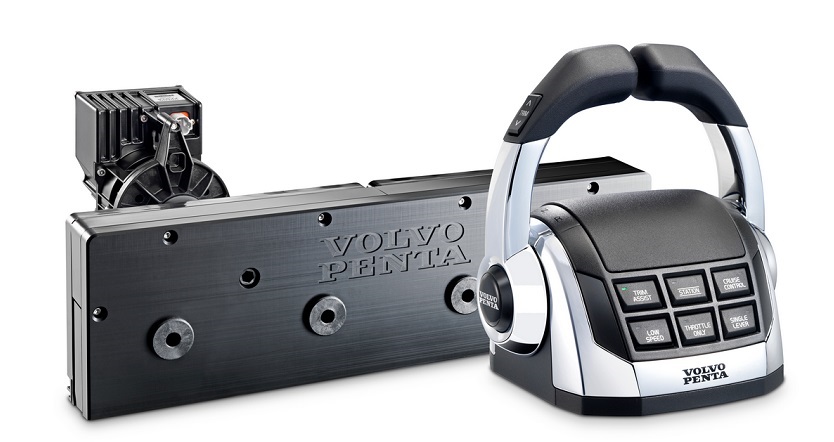Volvo Penta has added smaller interceptor blades, of 300mm and 450mm, to its range so that the new Interceptor System is available in six sizes, up to 1050mm. The extension of the range means that compact vessels with twin four-liter engines up to large boats can now use the system. The new smaller blades can also be fitted alongside larger sizes – for example, 450mm and 1050mm to equal 1500mm – to create an even greater number of sizing options.
Marcus Pettersson, product development specialist for vehicle electronics at Volvo Penta, says: “The new blade sizes really widens the range of boats that can use the Interceptor System, from smaller boats with twin four-liter engines to much larger boats. Up to four blades can be used in an installation, and can be combined as required for the boat. Each side, port or starboard, are treated as one unit and used together.”
When the interceptor system is deployed, the blades lower into the water vertically and create hydrodynamic pressure which produces lift to the stern, enabling the boat to accelerate to the plane smoothly for a perfect running attitude. The result is less friction with the water and therefore less fuel required to power the boat at speed. Consequently, better fuel economy means lower total cost of ownership. The blades can be operated individually to control list, and full blade stroke deployment is 50mm.
New software for more options
Volvo Penta Interceptor System 300-1050 has new software and is available in three versions:
• Manual (fitted as standard) – for operator-led trim functions.
• Auto trim and list (as an option) – by continuously compensating for wind and load, to automatically correct and optimize trim and list performance.
• Auto, trim, list and coordinated turn (as an option) – to automatically control list angle during a turn, as well as optimization of general trim and list functions. With the coordinated turn, the boat turns quickly while remaining as upright as possible, for optimal visibility and onboard comfort.
“The whole system provides stabilization and a smooth comfortable ride, and is really easy to use,” adds Pettersson.
One control unit with easy upgrades
The Interceptor System is integrated into the Electronic Vessel Control (EVC) for ease of operation and monitoring. The automatic options work by using GPS, rudder angle, engine data, gyro sensor and an accelerometer (which measures acceleration of movement).
The blades are made of composite materials so there is no corrosion, and the system’s self-cleaning mode minimizes marine growth for continual functionality. The interceptor blades are usually installed during manufacture of the boat, but retro-fitting is also available along with controls and additional hardware. The automatic options can be over-ridden manually, and the blades retract when the engines are switched off.
Andrea Pedersén, Volvo Penta’s product manager for Electronic Vessel Control and software, says: “The Interceptor System is integrated and robust; it is a very advanced system but also easy to use – you just push a button and the boat handles itself.”

